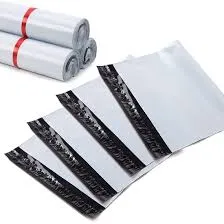cast stretch film
The Versatile World of Cast Stretch Film
In the packaging industry, the quest for efficiency and protection has led to the evolution of a variety of materials and technologies. One such innovation that has gained significant traction in recent years is cast stretch film. This specialized type of film offers unique advantages that make it a preferred choice for many businesses worldwide, particularly in logistics and warehousing.
Cast stretch film is produced through a casting process, where molten plastic is extruded through a flat die and then stretched in both horizontal and vertical directions. This method results in a film that is thinner yet stronger, providing an excellent balance of stretchability, clarity, and puncture resistance. The stretching process also enhances the film’s memory, allowing it to adhere tightly to the packaged goods and maintain its grip during transportation.
One of the most significant benefits of cast stretch film is its remarkable clarity. This transparency allows operators to see through the film, facilitating easier inventory management and inspection of packaged goods without the need to unwrap them. In industries where product visibility is crucial—such as food and retail—cast stretch film provides an efficient solution for both protection and presentation.
Another noteworthy characteristic of cast stretch film is its high level of stretch and recovery. The film can stretch to more than 300% of its original length, allowing it to wrap around products of various shapes and sizes snugly. This ability is vital for ensuring that the loads remain stable during transit, minimizing damage and loss. The film’s excellent recovery means it will return to its original shape after being stretched, securely holding the load in place.
cast stretch film

Additionally, cast stretch film is known for its superior load-holding force. This makes it an ideal choice for bundling multiple items together, such as pallets of goods in warehouses. A well-wrapped pallet can withstand the rigors of shipping and handling, reducing the risk of products becoming dislodged or damaged, which in turn enhances the overall efficiency of the supply chain.
Moreover, cast stretch film is available in a variety of thicknesses and formulations, making it customizable for different applications. Businesses can select from various colors and finishes, including UV protection or anti-static properties, depending on the specific needs of their products. This versatility allows companies across diverse sectors—such as food processing, pharmaceuticals, and consumer goods—to optimize their packaging solutions.
Sustainability is another vital aspect that has entered the conversation around packaging materials. Many manufacturers are now producing cast stretch film using recycled materials or developing films that are easier to recycle than traditional options. As businesses continue to seek environmentally friendly practices, innovative forms of cast stretch film are emerging, contributing to waste reduction and promoting a circular economy.
In conclusion, cast stretch film represents a significant advancement in packaging technology. Its combination of strength, clarity, stretchability, and versatility makes it an indispensable tool for businesses looking to enhance their operational efficiency. As industries evolve and the demand for sustainable practices grows, cast stretch film will undoubtedly play a pivotal role in shaping the future of packaging solutions. Its ability to protect goods while providing convenience and efficiency illustrates the dynamic nature of modern packaging and its impact on global trade.
-
The Best Uses for Small Trash Bags in Daily LifeNewsJul.01,2025
-
Stylish Reusable Grocery Bags TrendsNewsJul.01,2025
-
Shipping Advantages of Using Bubble Envelopes BulkNewsJul.01,2025
-
How Compostable Mailing Bags Reduce Environmental ImpactNewsJul.01,2025
-
Environmentally - Friendly Bulk Poly MailersNewsJul.01,2025
-
Eco Friendly Custom Laminated Tote BagsNewsJul.01,2025
-
Have the freedom of customizing your custom mailers any way you want! Our dedicated packaging support will help deliver you the mailing experience you need to elevate your shipping experience to the next level! Start making a strong impression on your customers and stand out from your competitors! -
LIYA uses high quality raw materials which directly purchased from large enterprises domestic and overseas such as PetroChina, Sinopec, Sabic, Equate, ExxonMobil, Dow Chemical, Total, and Borouge, ensuring the price advantage and quality of the raw materials. -
LIYA uses high quality raw materials which directly purchased from large enterprises domestic and overseas such as PetroChina, Sinopec, Sabic, Equate, ExxonMobil, Dow Chemical, Total, and Borouge, ensuring the price advantage and quality of the raw materials.
Warning: Undefined array key "ga-feild" in /home/www/wwwroot/HTML/www.exportstart.com/wp-content/plugins/accelerated-mobile-pages/templates/features.php on line 6714





